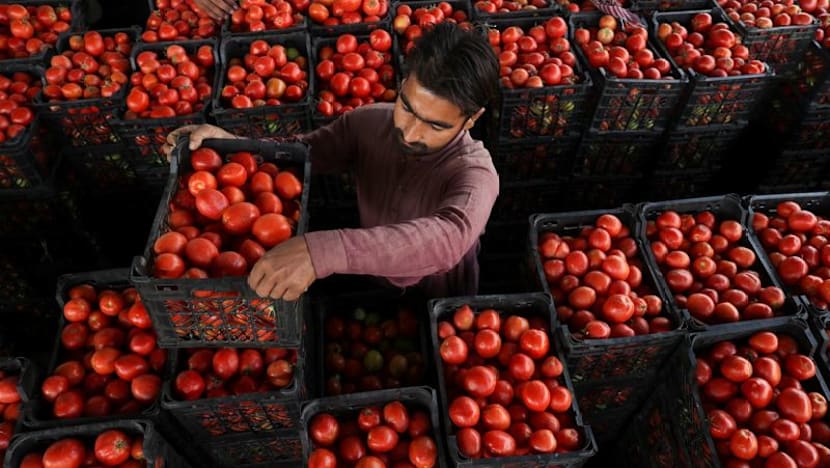Business
Pakistan’s Inflation Hits 6.2% in October Amid Supply Challenges

Consumer price inflation in Pakistan surged to 6.2 percent year-on-year in October, marking the highest level in twelve months. This increase, reported by the Pakistan Bureau of Statistics, comes as food prices have escalated due to the impact of recent floods and temporary disruptions at the Afghan border, which have strained supply chains.
On a month-on-month basis, prices rose by 1.8 percent, reflecting ongoing economic pressures. Just a week prior, the State Bank of Pakistan held its key policy rate steady at 11 percent for the fourth consecutive meeting. Officials indicated that inflation is anticipated to remain above the target range of 5 percent to 7 percent for several months before gradually decreasing in the next fiscal year.
Impact of Floods and Border Issues
The government’s forecast for October predicted inflation to remain within the 5 percent to 6 percent range, attributing this to supply pressures caused by the floods and border closures with Afghanistan. Flooding in August devastated farmland and industrial areas in Punjab, resulting in the deaths of over 1,000 people, displacing 2.5 million, and causing extensive damage to crops and factories. This has significantly tightened food supplies nationwide.
Further exacerbating the situation were border clashes with Afghanistan that led to the closure of major crossings vital for food and fuel trade. Although both countries agreed to extend a ceasefire, restrictions on crossings remained in place after October 11, hindering commerce and deepening shortages in Pakistan’s northwestern regions.
Economic Outlook Amid Challenges
Despite these challenges, the central bank has noted an improved overall economic outlook. There have been stronger-than-expected crop yields and increased industrial activity, alongside a positive rebound in high-frequency economic indicators. However, concerns persist regarding global commodity price volatility and domestic energy costs.
The recent inflation data underscores the ongoing economic difficulties facing Pakistan as it navigates the aftermath of natural disasters and geopolitical tensions. With essential goods becoming increasingly costly, households may feel the pressure as they cope with rising living expenses in the months ahead.
-

 Lifestyle3 months ago
Lifestyle3 months agoHumanism Camp Engages 250 Youths in Summer Fest 2025
-

 Sports3 months ago
Sports3 months agoDe Minaur Triumphs at Washington Open After Thrilling Comeback
-

 Business4 months ago
Business4 months agoKenvue Dismisses CEO Thibaut Mongon as Strategic Review Advances
-

 Sports4 months ago
Sports4 months agoTupou and Daugunu Join First Nations Squad for Lions Clash
-

 Top Stories4 months ago
Top Stories4 months agoColombian Senator Miguel Uribe Shows Signs of Recovery After Attack
-

 World4 months ago
World4 months agoASEAN Gears Up for Historic Joint Meeting of Foreign and Economic Ministers
-

 Business4 months ago
Business4 months agoOil Prices Surge Following New EU Sanctions on Russia
-

 Health3 months ago
Health3 months agoNew Study Challenges Assumptions About Aging and Inflammation
-

 Entertainment3 months ago
Entertainment3 months agoDetaşe-Sabah Violin Ensemble Captivates at Gabala Music Festival
-

 Entertainment3 months ago
Entertainment3 months agoBaku Metro Extends Hours for Justin Timberlake Concert
-

 Business4 months ago
Business4 months agoU.S. House Approves Stablecoin Bill, Sends to Trump for Signature
-

 Top Stories4 months ago
Top Stories4 months agoRethinking Singapore’s F&B Regulations Amid Business Closures









